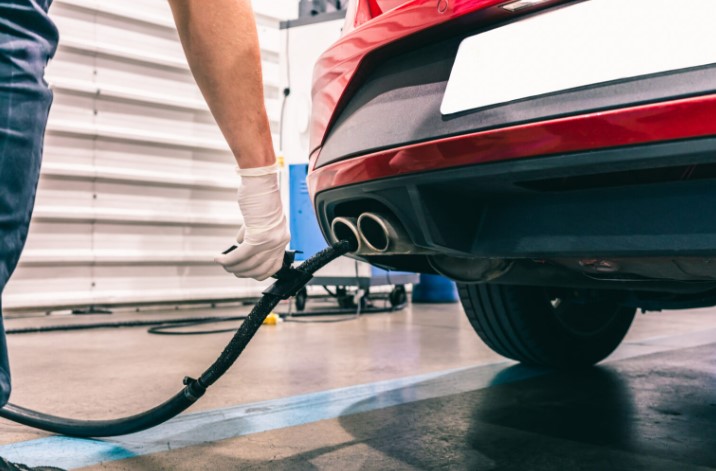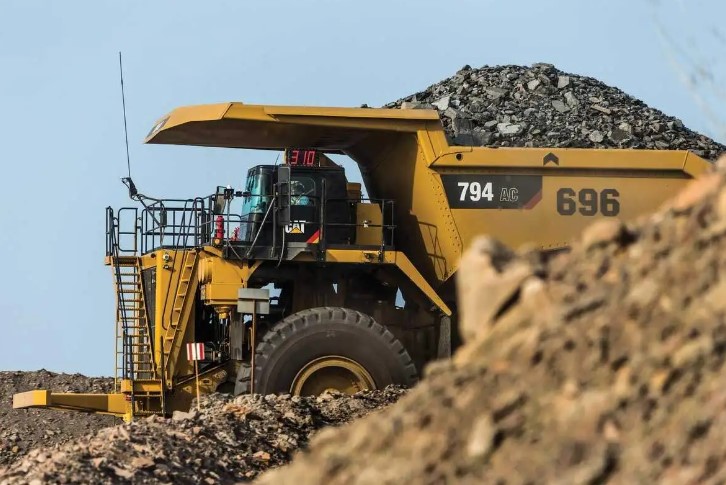How long will Ford keep designing cars in Australia?
After the Australian motor vehicle industry majors all but stopped manufacturing in Australia, there was a suggestion that they would retain high productivity, high value design, and research and development in this country.
That would underpin design hubs within universities, mostly in Melbourne, which would then contribute to broader manufacturing.
And to a large extent, the promise has been kept, mostly based on the massive Ford Design Centre at Broadmeadows in Melbourne, which is a globally connected, high technology design centre employing more than 2000 people.
Ford had many years of successful design and engineering based on the 2004 Territory model, Australia’s first and only locally built SUV, which reached a sales milestone of 150,000 units within eight years. It wasn’t a lot by global levels, but it did come early in the SUV boom, and provided great hope for R&D in Australia.
Now there is concern that Ford will, in the near future, concentrate only on the minor redesign changes for imported vehicles, and won’t undertake the global leadership on car design. In fact it looks poised to pull its international engineering and design capabilities out of Australia, breaking a promise made when the companies shuttered their manufacturing lines years ago and dealing a blow to Australia’s high-tech engineering sector.
While Australia continues to nurture some of the world’s best car designers and engineers, some industry experts believe it’s only a matter of time before Ford and Toyota – the only two major car companies left with international-standard design and engineering facilities in Australia – follow in the footsteps of Mitsubishi, Nissan and GMH by either being reduced to just sales and marketing organisations or shutting up shop forever, as in the case of the latter.
This is in contrast to what Ford and Toyota intimated in 2016 and 2017 respectively, which, upon the closure of their local manufacturing arms, said they would continue investing in Australia’s future by fostering new engineering and design talent and innovation.
The Morrison government response to the Senate Economics References Committee report “Future of Australia’s Automotive Industry” (Sept 2017) said: “The future of manufacturing in Australia lies in these kind of value-adding activities, from product concept, research and development, design and production, to distribution and after-sales service.”
Industry analyst and long-time car journalist Byron Mathioudakis says that while initially companies kept their promise by investing in Australian design and engineering facilities, and, in the case of Ford, even expanding its studio to become the Asian hub for global design, there are again doubts as to the longevity of the company’s future in Australia.
“As I understand it, the Ford Ranger T6.2’s successor, the as-yet unconfirmed ‘T7’, is expected to switch from having its engineering home base in Melbourne to Detroit, as it will be an all-new platform twinned with the larger next-generation F-Series truck that’s always been an American development,” says Mathioudakis.
“As a result, the design and engineering departments have already started contracting, according to some internal company sources, and there will never likely be another vehicle created from scratch in Australia on the scale of the T6.
“The ‘T7’ replacement’s ‘home room’ is expected to be in Detroit, following a press release from Ford back in 2019 stating its intention to rationalise all its next-generation truck platforms into a single architecture towards the end of the 2020s.”
Mathioudakis says, for a country which was once one of only a handful of nations in the world capable of designing, engineering and manufacturing a car from scratch, it is a national tragedy… and a brain drain of talent that we are now left with only satellite design and engineering outposts in Australia.
“Australia has a long and rich history of automotive innovation. For example, Ford Australia released the world’s first coupe utility in 1932,” Mathioudakis says. “And this type of vehicle remained in production here right up until the last Holden VF version was manufactured in 2017.
“Along the way, Holden, Ford, Toyota, Mitsubishi, Chrysler and Nissan all exported uniquely Australian vehicles at one point or another, with some models like Holden’s Commodore and Caprice, the Mitsubishi Magna/Verada and Toyota Camry leaving our shores in their tens of thousands annually.”
With nearly a century worth of automotive design, engineering and manufacturing experience in this country, Australian-made vehicles developed a reputation for being tough and durable, especially in hot climate regions.
For a country which was once one of only a handful of nations in the world capable of designing, engineering and manufacturing a car from scratch, it is a national tragedy… and a brain drain of talent that we are now left with only satellite design and engineering outposts in Australia.
Car design still relevant in Australia … for now
Associate Professor Selby Coxon, an industrial designer from Monash University who has written about the changing nature of the automotive industry in Australia, says Ford and Toyota continue to have design studios here because “you don’t need to be above the factory floor to design things in this day and age … and because car designs are often tweaked to suit the tastes and legislative needs of global regions”.
He does, however, point to the closure of GMH, which ceased to operate altogether even after first saying it would retail its design capabilities in Australia.
Ford, located on the northern outskirts of Melbourne in the suburb of Campbellfield, underwent a minor refurbishment in 2012, and a further $12 million expansion and redesign in 2021 to support a refocus on tech-heavy, very advanced vehicles.
Ford’s head of design Max Wolff says the studio, which employs about 2300 people, houses technology such as “an industrial milling machine, which essentially 3D prints and carves out 1/3-scale models to full-size vehicles out of clay”.
“You can imagine the benefit to our team of being able to print a vehicle to trial and perfect our designs, rather than having to build a whole Everest or Ranger.”
Virtual and augmented reality has also become a game changer. Wolff says VR enables the team to experience what a design will be like in the real world, allowing them to “refine until it’s perfect”.
“We can change an aspect of a headlight and in a second see what this is going to look like from every angle and how it’ll impact the aesthetics of a vehicle,” Wolff says. “VR also lets us see and share our designs in real time with colleagues all around the world – another benefit if we want to make sure our vehicle design will resonate with other markets.”
Ford car designer Mark Johnson, who also teaches industrial design at Monash University, says technology has become far more advanced since he was a master’s student in automotive design 15 years ago.
Back then, Johnson was still sketching with markers and chalk. Digital tools such as tablets and computers were only starting to gain ground, and artificial intelligence, VR and 3D printers were nothing more than pipe dreams.
“The industrial design students I teach are already proficient in coding and 3D printing,” Johnson says. “It makes me feel old.” He says his role as a lecturer at Monash is important to the company, which often looks for new talent as technologies once thought complex turn commonplace.
When Cosmos asked Ford about the company’s plans to reduce the Australian design component and engineering of the Ford Ranger T6.2’s successor, a spokesperson said: “Our team continues to lead work on Ranger and Everest, as well as contributing extensively to global programs. Contract workforce levels regularly change at Ford, based on our product development and vehicle launch cycles”.
She added that “Ford invests around $500 million in its Australian operations each year, as [the country] is a key product development hub for Ford, and our product development operations is where the R&D happens”.
This R&D includes developing more advanced vehicles to driver assist technology (like automated parallel parking) to vehicle testing (e.g. in anechoic and climatic chambers to test sound, extreme heat, cold and wind, and safety testing and simulation with robots and dummies).
Ford is central to the future of automotive design in this country, and stories about its demise occur every few years. Its importance to the local design industry is highlighted by its financial commitment to Australia: Ford is reported to have invested more than $1.9bn in its research and development centres in Australia between 2016 and 2019.
In 2022, Ford, in conjunction with the University of New South Wales, received an Australian Research Council (ARC) $345,388 linkage grant to study motion sickness in autonomous vehicles. The company also has strong ties to Monash and RMIT universities.
A Toyota spokesperson told Cosmos the company was committed to contributing to Australia, with its product design team closely partnering with non-profit organisations such as Engineers Without Borders, in addition to using its “collective expertise to help create a solar-powered trailer for remote Australian communities, and a bicycle-powered washing machine for Vanuatu”.
“Product Design has a relatively young team and is always connected to universities to help foster new talent, providing opportunities for secondments at design headquarters in Japan. We also, with one of our first grants, established the Toyota Community Trust to encourage and enable more young Australians to pursue further study and future careers in … [STEM]. The current focus is on projects in Melbourne’s west.”
Industry experts still fear an exit
Yet, despite Australia’s reputation of producing some of the best quality car engineers and designers by global standards – “as an educator of a good number of automotive designers, I can say we have good quality design and engineering in this country”, Coxon says – industry experts and car enthusiasts continue to be on the lookout for any plans Ford and Toyota are winding down operations in Australia.
Last October, Ford’s decision to stand down 120 contract positions among approximately 2300 staff spooked industry observers that the company may be planning to move its expertise to China, the world’s biggest car market. Dianne Craig, Ford’s boss of international markers, told Drive the cutbacks were to match workflow and not an indication of wide-scale closure of the design studio and engineering facilities.
“As an educator of a good number of automotive designers, I can say we have good quality design and engineering in this country.”
Selby Coxon
Coxon believes a continuing Toyota and Ford presence in Australia is integral to whatever remains of our automotive industry, because they ensure a “voice at corporate headquarters that recognises Australian market needs and aspirations”.
“They also provide something of a shop window to the world of Australian creative skills, ingenuity and progressive thinking regarding the future of the auto industry globally.”
Mathioudakis, however, isn’t all that positive. He says Australia is starting to lose a century’s worth of manufacturing talent because there is no more investment in the skill, and he believes Ford is starting to wind down some of its design and engineering capacity in Australia as the company’s work dries up.
“Moving the design and engineering of the next-generation Ranger and Everest to Detroit from about 2027 signals the end of more than a century of Australian vehicle engineering,” he says. “Once that happens, it’s going to be a bloody tragedy. We will no longer be fostering designers, engineers and mechanics in the car industry, as there will be no incentives for the car companies to pay universities to do so.”
While Mathioudakis says Ford may still retain a small presence here for smaller design and engineering jobs, “losing that huge contract to design the T6 Ranger means their future is up in the air. Whether it will continue investing hundreds of millions of dollars to maintain its workforce in Melbourne, no one knows.”








